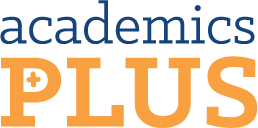The school year is well under way which means parent-teacher conference season is upon us. While parent-teacher conferences are intended to be helpful to gain insight on your child’s progress in school, oftentimes, parents are left with a lot of unanswered questions. MAP Growth testing is a common tool that schools use to measure a student’s growth in math and reading. Typically, a report is given to the parents summarizing their child’s MAP Growth test during the parent-teacher conference. Unfortunately, this report only provides your child’s achievement and growth scores in academic subjects. For example, it may say your child has low achievement and low growth in reading, but not clarify specifically what skills they should work on. For parents who feel confusion and frustration towards parent-teacher conference season, we are here to help you fully understand your child’s learning profile through the Learning Checkup
Learning Checkup vs. MAP Growth Testing
Completed independently by the student on a computer
Provided with a report that summarizes your child’s results with percentiles
Assesses academic knowledge only
The difficulty of the questions increases based on your child’s performance of the previous questions
Provided with student’s level of achievement and academic growth over time
Receives a RIT score for each subject that was assessed
Administered by an instructor who has a Master’s degree or is working towards their PHD
Provided with a Parent Roundtable meeting to fully discuss your child’s results, a comprehensive report summarizing the Learning Checkup, and graphs based on age and grade level
Assesses cognitive skills, oral language, and academic knowledge
Determines a cut-off based on your child’s ability
Provided with next steps for your child to achieve their potential
Receives a Standard Score and Percentile Rank with every test completed
While MAP Growth testing may be helpful for having a brief grasp on where your child lands academically, a Learning Checkup gets to the root of your child’s learning difficulties. We are able to identify strengths and weaknesses within working memory, processing speed, visual-spatial thinking, comprehension knowledge, and more.

